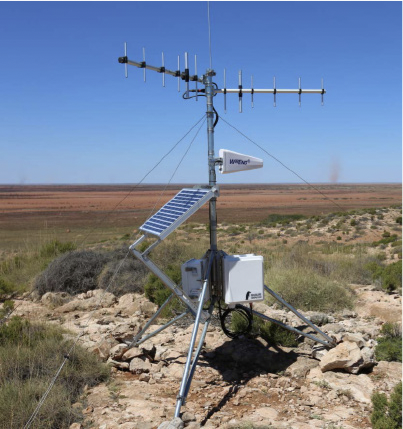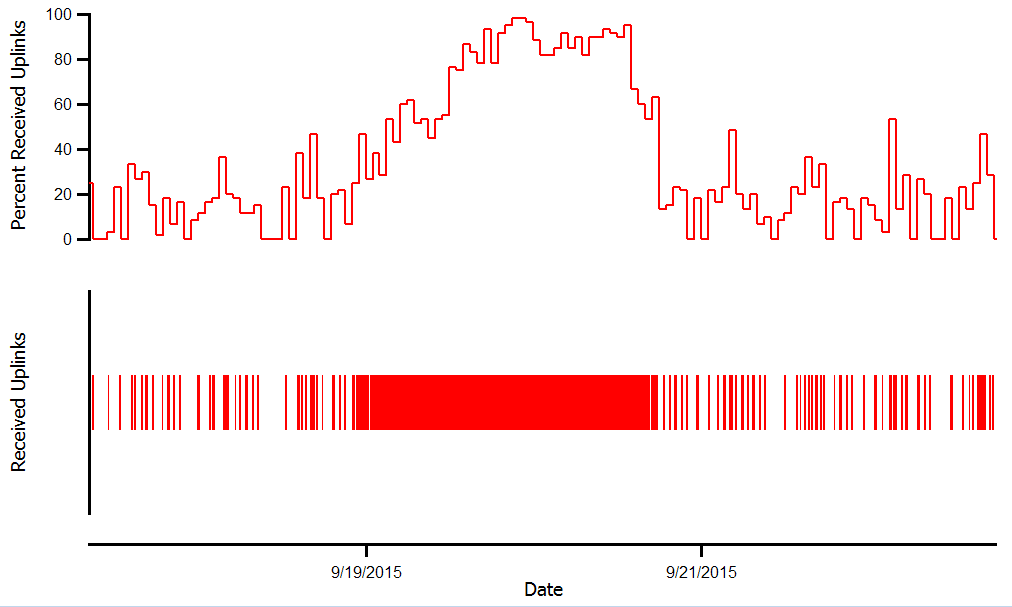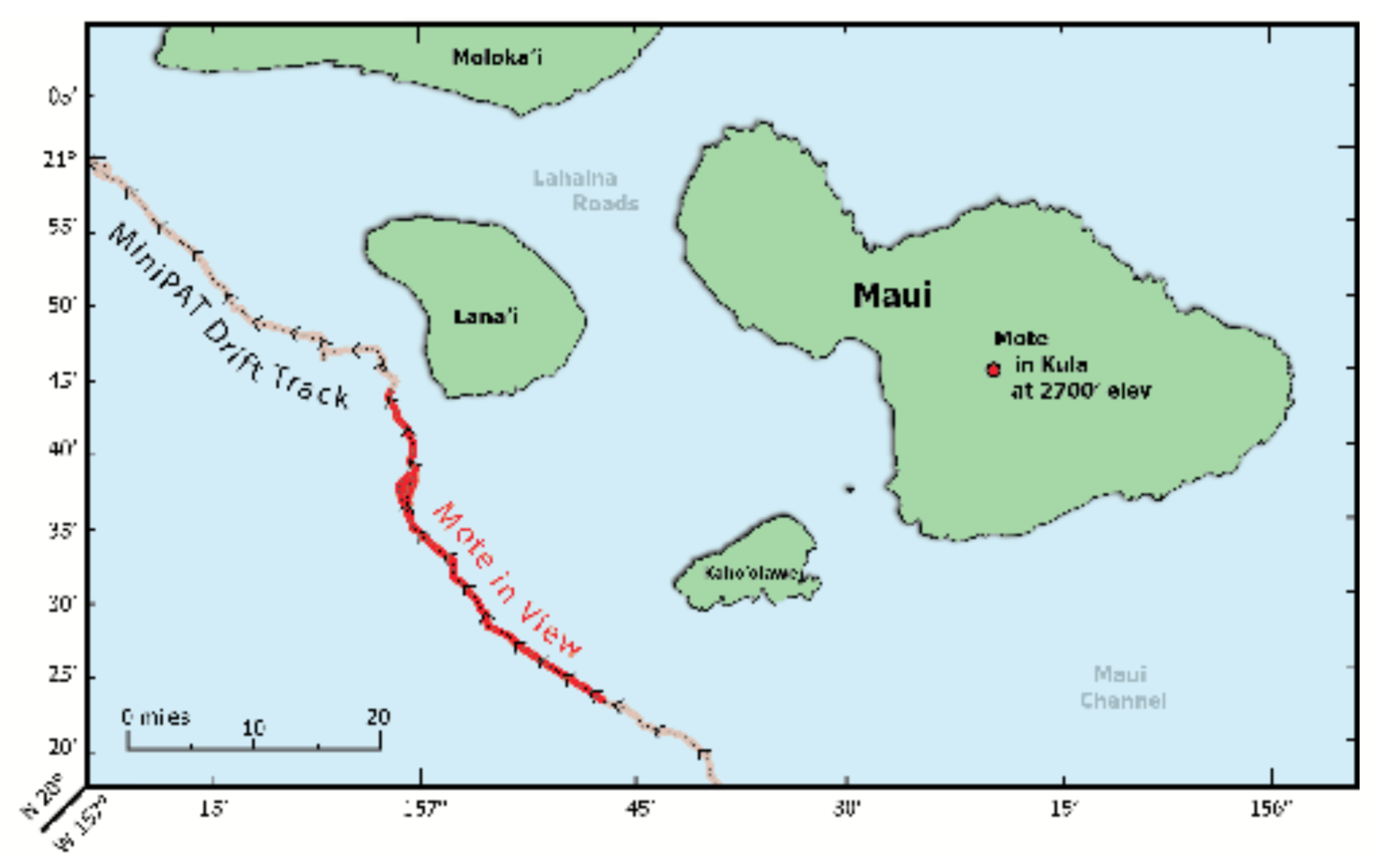Data throughput of transmitting tags is limited by the availability of Argos satellite coverage (20 percent in equatorial regions improving to 50 percent at the poles).
Wildlife Computers Motes are stationary, unattended ground-based listening stations which continually log telemetry data from satellite tags on animals within reception range (distances over 207 kilometers have been observed – see http://bit.ly/motestudy for more information).

The received data are accessible online either immediately through a Wi-Fi/GSM connection or at a later date through physical USB download.
Each mote is custom built to fit the requirements of your field site. Our engineering experts provide consultation on sitespecific planning and installation.
More Data, More Possibilities
Motes work with, and enhance, the Argos system. They are always online, even when satellites aren’t in view, thereby significantly increasing data throughput for any tag within range.
Data are uploaded to the Wildlife Computers Portal where they are easily viewed and managed.
Configurable Options
The system power supply, mounting gear, and data transfer methods are all configurable to support even the most remote deployment sites.
Motes can be fitted with two, six-element Yagi antennas for maximum range in two specific vectors or one directional Yagi for maximum range in one vector and an omnidirectional antenna for linear coverage.
Tripods with leg and mast tubing can be provided to mount the Mote and elevate antennas. Wildlife Computers can also provide tripod hardware and tubing dimensions to enable researchers to source tubing locally.
Wildlife Computers can provide a variety of power supply options. These include AC or DC supplies with battery backup and fully-independent solar power systems.
“Motes are capable of greatly enhancing successful reception of satellite-relayed signals and thus improve both the quality and the quantity of telemetry-based physical and biological datasets compared to a traditional Argos satellite system.”
Motes enhance data recovery from satellite-relayed biologgers and can facilitate collaborative research into marine habitat utilization, Animal Biotelemetry, July 2017
EFFECTIVE TECHNOLOGIES FOR RESEARCH SUCCESS
The drift track of a MiniPAT off the coast of Maui highlights the Mote’s utility. After releasing from an Oceanic Whitetip shark, the continually transmitting pop-up tag floats by a Mote stationed 2,700’ feet up the side of Haleakalā.
The tag was in view of the Mote for 43 hours. During that time, 1,728 transmissions were detected by the stationary receiver. In the same time period, Argos satellites picked up only 480 messages.
“They [Motes] consequently contribute to bridging gaps in knowledge of biology and ecology of animals and ecosystems, of the mechanisms by which one affects the other, and of their conservation and management.”
Motes enhance data recovery from satellite-relayed biologgers and can facilitate collaborative research into marine habitat utilization, Animal Biotelemetry, July 2017 Read the entire study at http://bit.ly/motestudy


TECHNICAL SPECIFICATIONS
| Enclosure | 34 x 39 x 19 cm / 6 kg (with electronics) |
| Standard Argos Antenna | Yagi (11 dBi) / Omnidirectional (2.15 dBi) |
| Argos Receivers | 401 MHz / -107 dBm minimum sensitivity |
| Argos Transmitter | 401.678 MHz / 0.5 W / 3 dBi peak antenna gain |
| Wi-Fi Transmitter | 802.11n / 802.11 g / 2.4 GHz / 0.1 W / 5 dBi peak antenna gain |
| Diagnostic Sensors | GPS / Temperature / Relative Humidity / Power Status / Messages Received |
| Operating Range | Temperature -20° C to 60° C |
| Storage | 5 GB / 25 million messages locally / Unlimited messages in cloud storage |
| Input Power | 9-20 VDC / 0.5 A |
| Communication | Via USB Port using Wildlife Computers USB Communications Cable |
This is a small representation of our available tags.
Tag features and specifications subject to change without notice.
